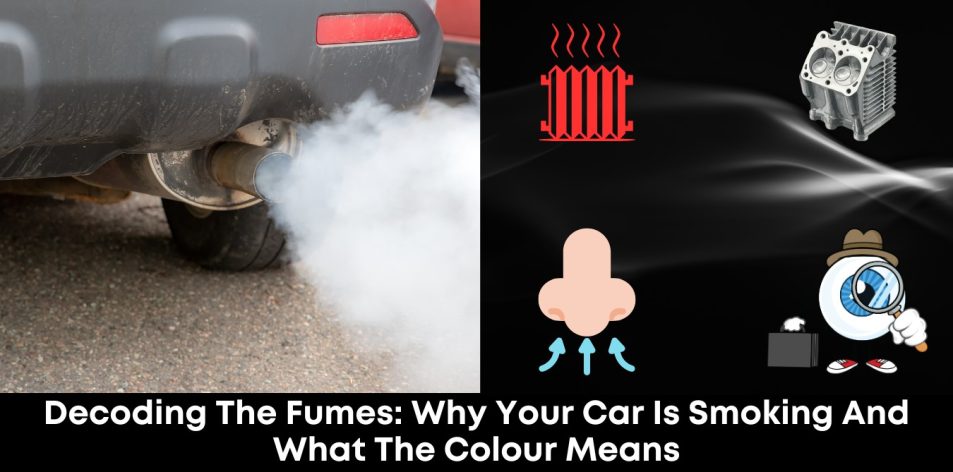Decoding the Fumes: Why Your Car is Smoking and What the Colour Means
A Crucial Guide to Diagnosing Engine Health by Smoke and Scent
When you see smoke pouring from your vehicle, it’s a clear signal that something is seriously wrong and requires immediate attention. Smoke from your exhaust pipe is a by-product of the combustion process, and its colour and accompanying smell are the best clues you have for diagnosing the underlying problem. Ignoring these signs can quickly lead to catastrophic engine failure and costly repairs. This article breaks down the meaning of different smoke colours and scents, empowering you to identify the cause and act quickly to protect your investment.
The Different Colours of Smoke and Their Meaning
Smoke from the exhaust generally falls into three main categories, each indicating that a foreign substance—oil, coolant, or excess fuel—is being burned in the combustion chamber or exhaust system.
| Smoke Colour | Common Cause (The Problem) | Smell and Urgency |
|---|---|---|
| White or Grey (Thin, dissipates quickly) | Normal condensation or water vapour in the exhaust system burning off, especially on a cold start. | No distinct smell. Low Urgency (if it disappears within a minute or two). |
| White or Grey (Thick, persistent cloud) | Engine is burning Coolant (anti-freeze), meaning fluid is leaking into the combustion chamber. | Often has a Sweet Smell. High Urgency (Indicates a potentially blown head gasket, cracked cylinder head, or cracked engine block. Stop driving immediately to prevent overheating and catastrophic damage). |
| Blue or Bluish-Grey | Engine is burning Engine Oil. Oil is leaking past worn internal parts into the combustion chamber or hot exhaust. | Distinct smell of Burnt Oil. Medium-High Urgency (Can be caused by worn valve seals, piston rings, or a failing turbocharger. Requires professional diagnosis and repair, as driving without oil can seize the engine). |
| Black | Engine is running Too Rich (burning too much fuel and not enough air). This is typically excess, unburnt fuel. | Smells strongly of raw or partially burnt Fuel/Gasoline (sooty). Medium Urgency (Common causes include a clogged air filter, faulty fuel injectors, or a problem with the mass airflow sensor. This wastes fuel and can damage the catalytic converter). |
Identifying the Location of the Smoke
The source of the smoke is another key diagnostic clue:
- From the Exhaust Pipe: As detailed above, this means something is burning inside the engine.
- From Under the Bonnet/Hood: This usually indicates a fluid leak onto a hot surface, such as the exhaust manifold.
- Smell of Burnt Rubber/Plastic: Could be a loose belt rubbing, or a plastic component/wire melting onto a hot engine part.
- Smell of Burnt Oil: A simple valve cover gasket leak, which is a common and relatively easy repair, is allowing oil to drip onto the manifold and burn off.
- Sweet Smell: Could be coolant leaking from a hose or radiator and steaming off the engine block.
The Importance of Immediate Action
When you see any persistent smoke from your vehicle, especially thick white or blue smoke, your immediate response should be:
- Stop Driving: Pull over safely and switch off the engine to prevent further damage.
- Check Fluid Levels: Check your oil and coolant levels. A low level in either is a strong indicator of the problem.
- Seek Professional Help: Do not continue driving until a professional mechanic has accurately diagnosed the issue. Addressing the problem immediately is the best way to avoid a full engine failure, which is the most costly repair a vehicle owner can face.
By learning to read these visible signs, you act as your vehicle’s first line of defence, ensuring its longevity and protecting yourself from significant inconvenience and expense.

